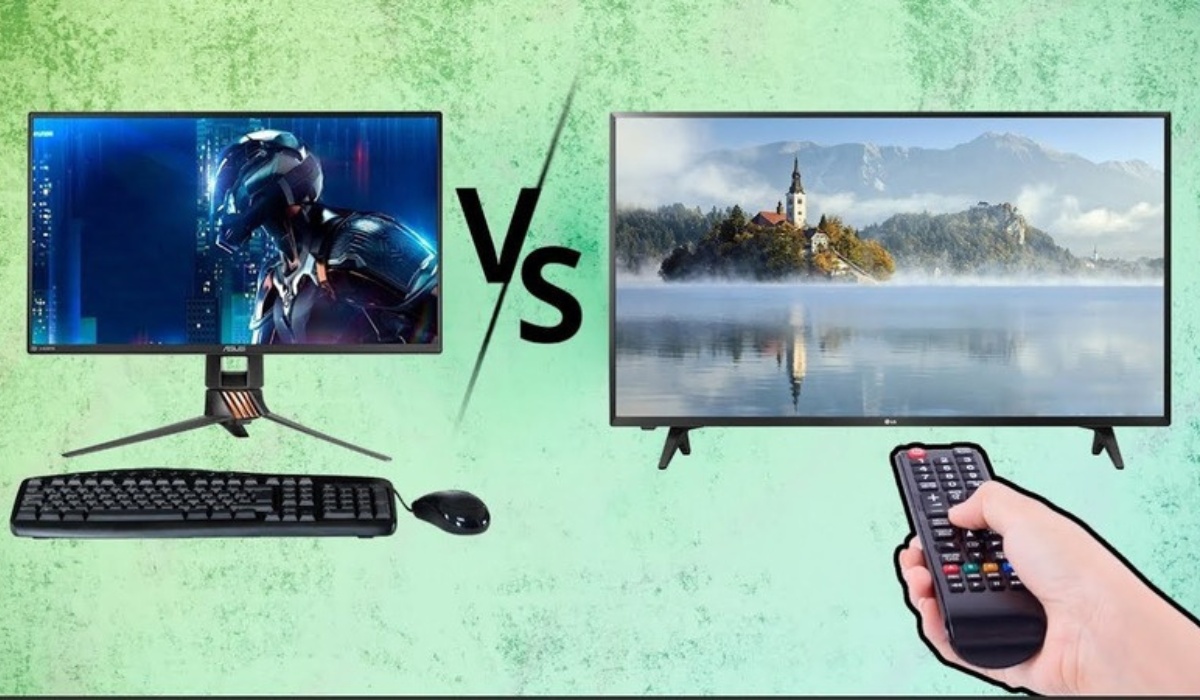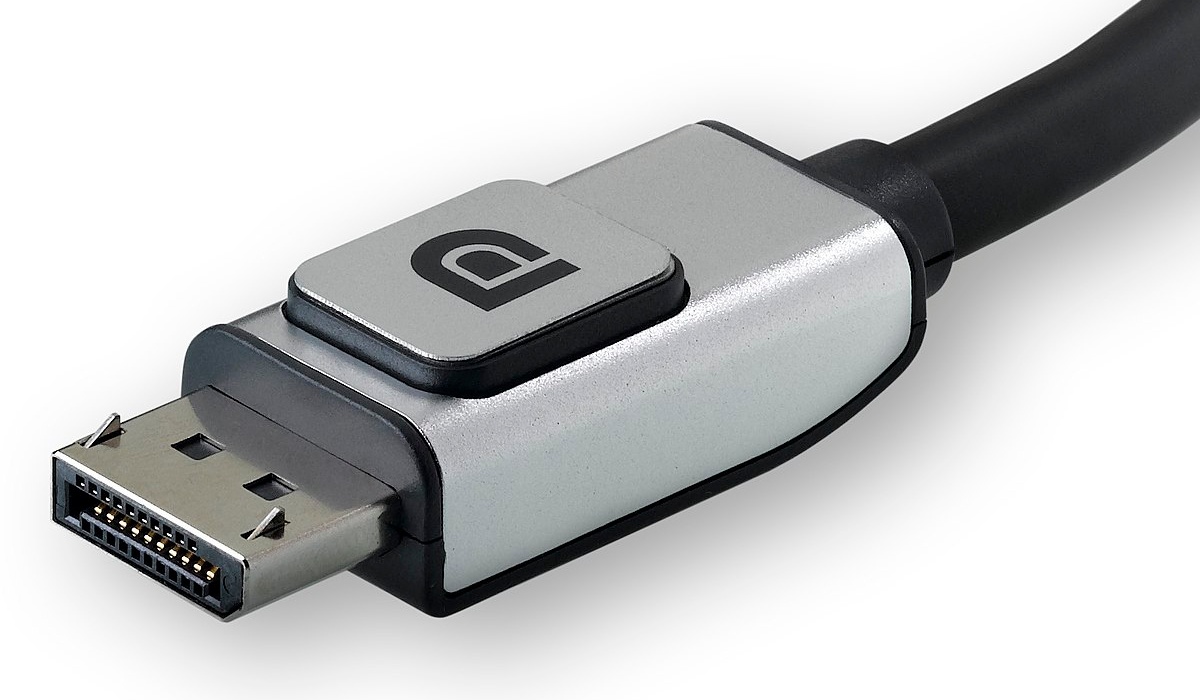Turning a PC display into a television is an effective way to increase entertainment options while saving space. Whether you want to improve your viewing experience, repurpose an old monitor, or build a multi-functional arrangement, transforming your PC monitor into a TV is a cost-effective and practical solution.
Understanding the steps and available options allows you to effortlessly integrate your monitor into a home entertainment system, combining the advantages of a television with the versatility of a computer monitor. So, how to turn pc monitor into tv?
Table of Contents
How is a Computer Monitor Different from a TV

| Computer Monitor | TV Monitor |
| Usually smaller in size | Usually larger in size |
| Aspect ratio wider or narrower than 16:9 | Standard 16:9 aspect ratio |
| Capable of displaying high-resolution images | Has a high-resolution screen |
| Higher refresh rates ranging from 120Hz to 144Hz, even up to 480Hz | Refresh rate typically ranges from 60Hz to 120Hz |
| Built-in speakers in monitors are very rare | Always comes with integrated speakers |
| Supports various connection ports including VGA, USB, DisplayPort, HDMI | HDMI is the most common port on TVs. Some other ports include Optical Audio Out, USB, and Ethernet |
| The display does not come with wireless connectivity | TVs often support high-speed wireless network |
TV screens and computers share many similarities, from functionality to pricing; however, there are still distinctive differences. It is crucial to consider both the cost and accompanying features for each product. Despite the advancing technology, which elevates the value of laptops and occasionally puts them on par with the price of TVs, comparing them remains a challenging task
How To Turn PC Monitor Into TV
HDMI Connection

The majority of subscription television decoders and digital terrestrial television tuners offer HDMI ports in addition to extra audio outputs, sometimes even optical audio outputs. Just use the HDMI input on the decoder to connect it to the monitor, and use the appropriate connection to output the audio stream to an external sound system.
On your PC display, locate the HDMI port, which is usually located on the side or back. Attach the HDMI cable’s one end to the monitor’s HDMI port. Next, attach the other end to the external device’s HDMI output port, which could be a streaming device or cable box. In doing so, a safe and excellent digital link for audio and video signals is established.
Using VGA or DVI

The connection should have the same connector on both ends, and the DVI and VGA ports on the computer and TV should be precisely the same.
The VGA input on certain TVs is marked “PC IN” or “Computer IN.” On your PC monitor, locate the VGA or DVI port; these are typically located on the rear panel. Attach the VGA or DVI end of the proper cable to the matching port on the monitor. The external device’s VGA or DVI output port should be linked to the other end of the cable. To guarantee a steady and dependable video transfer connection, secure the cords once connected. Keep in mind that DVI can send both video and audio provided the monitor and device allow it, whereas VGA can only transfer video.
DisplayPort Connection

DisplayPort cables offer a flexible choice for high-quality communication since they are made to transfer both audio and video signals. On your PC display, look for the DisplayPort; it’s usually located on the back panel. Attach the DisplayPort cable’s one end to this port.
Locate the matching DisplayPort output on your external device, then attach the other end of the wire to it. Make sure the cable fits snugly, and if it has locks, turn them to keep it from unintentionally disconnecting. With its strong interface that can handle high resolutions and refresh rates, DisplayPort is appropriate for a wide range of display requirements.
Configuring Display Settings
Using the PC to Access Display Settings: Right-click on the desktop and choose “Display Settings” from the context menu to adjust your display settings. This will cause the settings window to pop up, allowing you to modify the setup of your display.
Modifying Resolution and Refresh Rate: Go to the “Resolution” and “Advanced display settings” sections of the Display Settings. For best clarity, select the resolution here that corresponds to the native resolution of your TV. Furthermore, modify the refresh rate to guarantee fluid images.
Setting Up Sound Output: Your TV should immediately get the sound if you’re transmitting both video and audio over HDMI or DisplayPort. On the other hand, use the Control Panel to access the “Sound” options if you run into any problems. Set your TV as the default device for playback to guarantee that the audio is directed correctly.
You may adjust the display output to fit your TV and guarantee a flawless multimedia experience by setting these parameters.
FAQs
1. Can you use a gaming display to watch TV?
A multitude of inputs is supported by gaming monitors. This covers DisplayPort and HDMI as well as occasionally DVI and VGA, though those are not common in modern gaming monitors. Monitors are unable to display typical cable or over-the-air TV signals because they do not have a TV tuner.
2. Can a computer display be used as a television?
Another method is to use an HDMI streaming device, such as an Android TV box, Fire Stick, Chromecast, or IPTV box, to transform a computer monitor into a TV or simply a video output device. Media boxes are even included in certain internet service providers’ packages. A display unit with an HDMI input is all you need.
Conclusion
Depending on the connections you have available, you must choose from HDMI, VGA/DVI, and DisplayPort to convert your PC display into a TV. Make sure the right cables are used, plug them into the appropriate ports, and adjust the resolution and refresh rate of the monitor. If needed, adjust the sound output settings as well.
By using these instructions and looking into customizing choices, you can get the most out of your PC monitor and make your desktop feel more like a TV. Savor the ease and versatility of owning a multipurpose display that meets your demands for business and play. The article how to turn pc monitor into tv has provided you with a wealth of important knowledge; please look forward to future entries!
